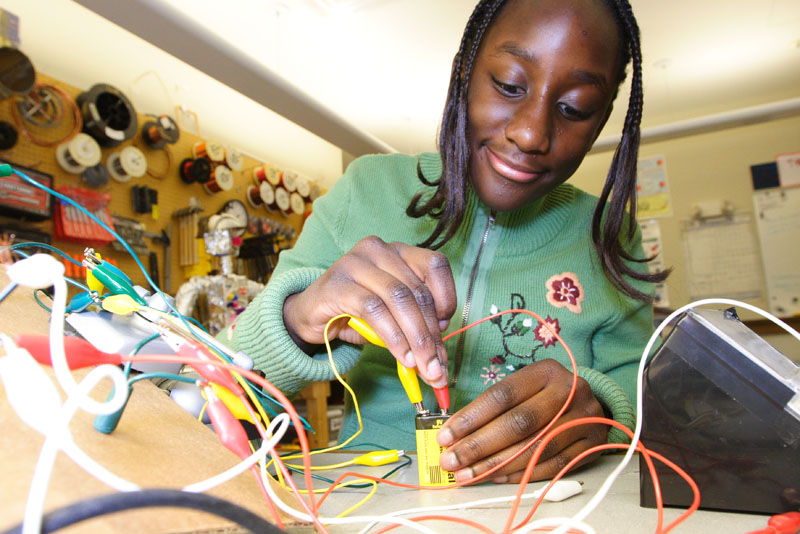The Center for Learning With Nature provides professional development and original, award-winning curricula for educators on how to teach daily school subjects (math, chemistry, engineering, etc.) in ways that increase students’ fascination with Nature and capacity to imagine and create a sustainable human-built world.
We help teachers build this awe and capacity in their students through the use of a powerful, new, pedagogical tool: Nature-enriched school teaching. Research shows that learning processes and outcomes improve when Nature is part of the educational journey, in classrooms or beyond. Whatever you teach — math, reading, engineering, chemistry, etc. — the results can improve when you conceptually connect these subjects to the wider natural world in a meaningful way. For example, we train engineering teachers to help young people access the ingeniousness of design in the biological world, in order to learn how to imagine and invent a more beautiful and sustainable human-built world themselves. For math, we show teachers how to cover the concepts they need to by using engaging natural phenomena, such as teaching kids how to use ratios and proportions by weighing the clouds passing over the school. The details vary, but no matter the subject, the pedagogical philosophy is the same, with the same improvement in outcomes.
There are many different ways to teach school subjects, but, in order to be effective, they all share the same pre-requisite: they need to be taught in ways that engage students’ interest. And there simply is no more engaging a phenomenon on this planet than the fact that it is alive. With its operatic whales, color-changing lizards, coordinating ants, and thirty-story-tall plants, the natural world is a teacher’s richest resource for captivating the next generation with learning. We leverage that fact in how we show teachers they can enrich their educational practice.
Through this approach, we’ve inspired thousands of teachers with our professional development and curricula, providing them with standards-aligned ways to enhance students’ love of learning and academic performance, their college and workforce readiness, while simultaneously enriching each student’s appreciation for the natural world and their aspirations and capacity to improve the world for the better.
And by the way, did we mention that this way of teaching reignites educators’ love of teaching, too? Because it does.
We’re fortunate to live in a beautiful and interesting world, as a species with the capacity to appreciate our circumstances, and shape our own future and those of our children, limited only by the possibilities we can imagine, our aspirations, and hard work. The Center for Learning with Nature helps teachers integrate wonder and mentorship from the natural world into everyday classroom-based learning, in order to build an appreciation for Nature that lasts a lifetime, enrich the educational experiences of students, and accelerate humankind’s transition to a more prosperous, equitable, and sustainable way of life.
The Center for Learning with Nature is a 501(c)3 non-profit organization. Our federal tax ID number is 46-5145494. Donations are tax deductible to the extent allowable by law.









